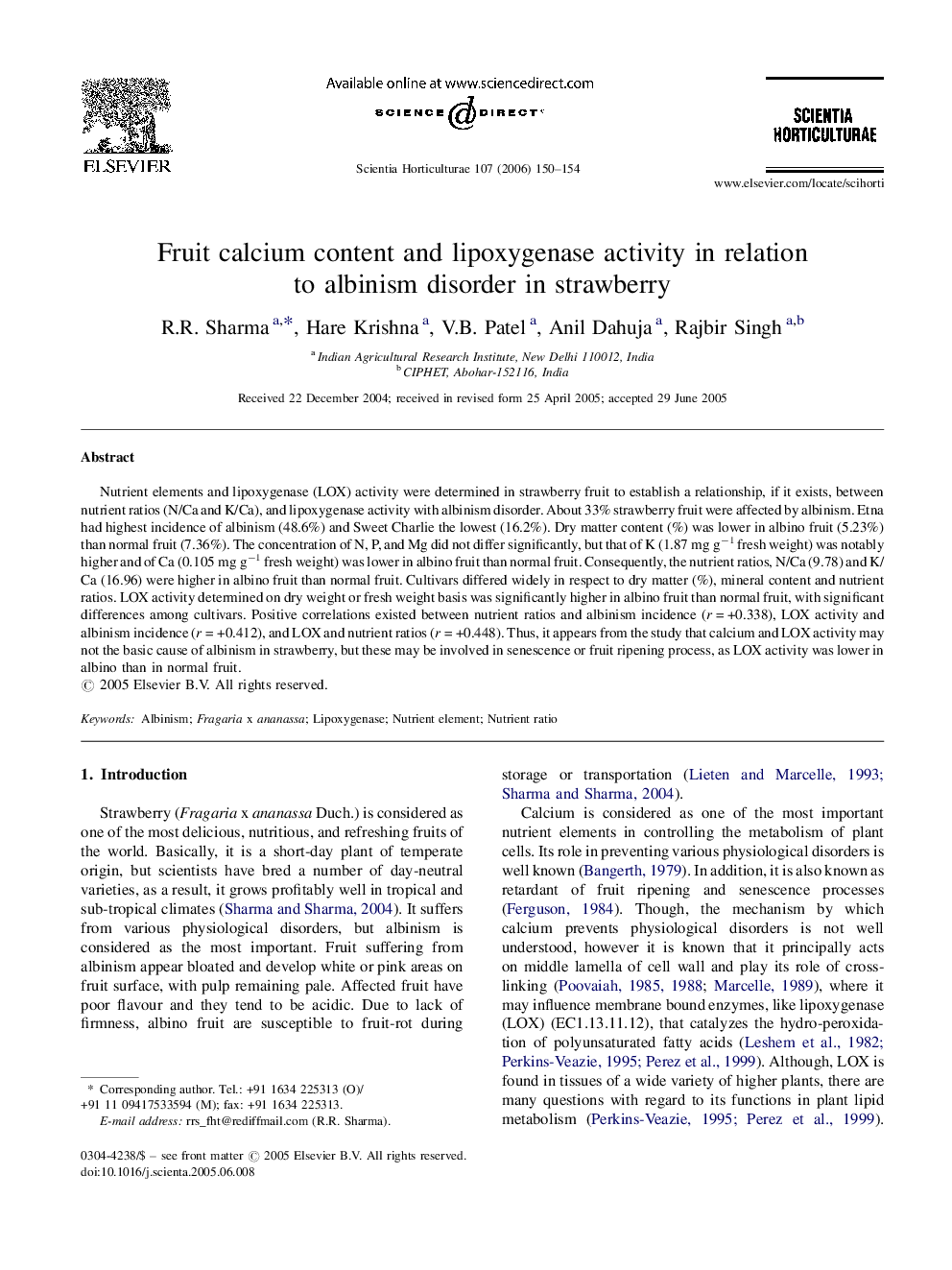| Article ID | Journal | Published Year | Pages | File Type |
|---|---|---|---|---|
| 4570160 | Scientia Horticulturae | 2006 | 5 Pages |
Abstract
Nutrient elements and lipoxygenase (LOX) activity were determined in strawberry fruit to establish a relationship, if it exists, between nutrient ratios (N/Ca and K/Ca), and lipoxygenase activity with albinism disorder. About 33% strawberry fruit were affected by albinism. Etna had highest incidence of albinism (48.6%) and Sweet Charlie the lowest (16.2%). Dry matter content (%) was lower in albino fruit (5.23%) than normal fruit (7.36%). The concentration of N, P, and Mg did not differ significantly, but that of K (1.87 mg gâ1 fresh weight) was notably higher and of Ca (0.105 mg gâ1 fresh weight) was lower in albino fruit than normal fruit. Consequently, the nutrient ratios, N/Ca (9.78) and K/Ca (16.96) were higher in albino fruit than normal fruit. Cultivars differed widely in respect to dry matter (%), mineral content and nutrient ratios. LOX activity determined on dry weight or fresh weight basis was significantly higher in albino fruit than normal fruit, with significant differences among cultivars. Positive correlations existed between nutrient ratios and albinism incidence (r = +0.338), LOX activity and albinism incidence (r = +0.412), and LOX and nutrient ratios (r = +0.448). Thus, it appears from the study that calcium and LOX activity may not the basic cause of albinism in strawberry, but these may be involved in senescence or fruit ripening process, as LOX activity was lower in albino than in normal fruit.
Related Topics
Life Sciences
Agricultural and Biological Sciences
Horticulture
Authors
R.R. Sharma, Hare Krishna, V.B. Patel, Anil Dahuja, Rajbir Singh,
